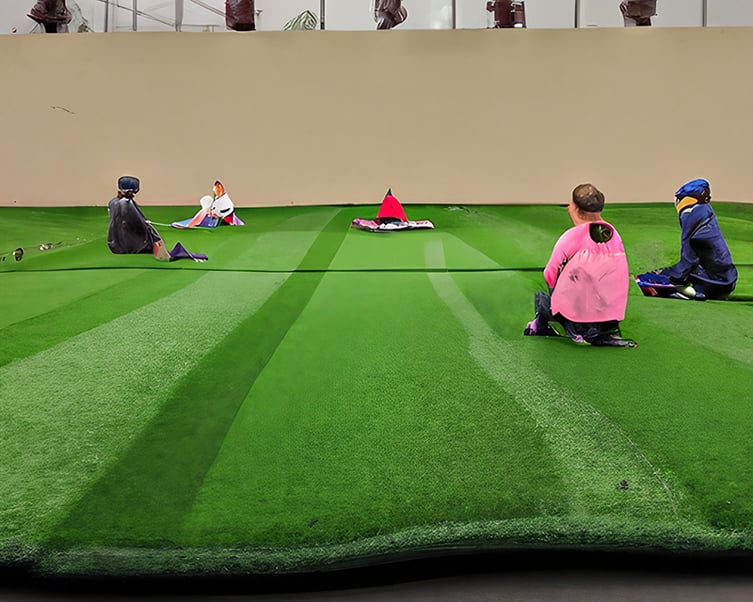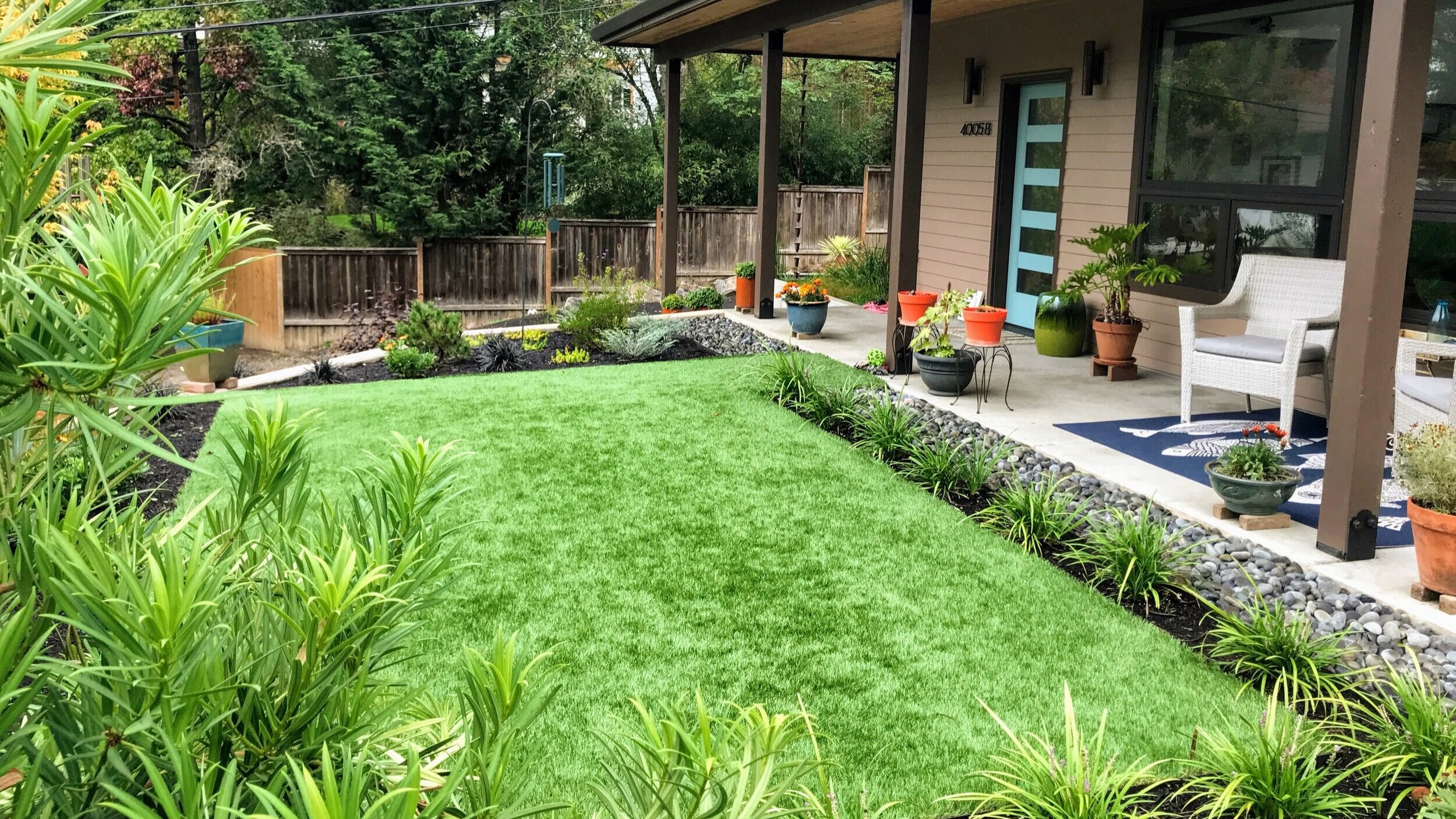Artificial Grass: The Eco-Friendly Option for Lasting Landscape Design
Artificial Grass: The Eco-Friendly Option for Lasting Landscape Design
Blog Article
Artificial Turf: The Ultimate Solution for Easy Grass Care
Fabricated grass has been continuously gaining appeal as a convenient alternative to conventional yard upkeep. From installment complexities to long-lasting expense contrasts and ecological effects, the choice to opt for man-made yard entails a nuanced analysis.
Benefits of Artificial Turf
Artificial yard uses a practical remedy for those looking for a beautiful grass without the trouble of constant maintenance. Unlike natural lawn, which calls for routine watering, mowing, weeding, and feeding, man-made grass remains green and lively with minimal initiative.
Additionally, synthetic yard offers a consistently cool and well-manicured look throughout the year. Its durability enables it to withstand hefty foot traffic, extreme weather, and pet dogs without showing indications of damage - Artificial Grass. This resilience makes certain that your exterior space stays immaculate and inviting, improving the total aesthetic of your building
Additionally, man-made yard is an economical choice in the future, as it removes the requirement for expensive maintenance devices, water expenses, and specialist solutions. Its preliminary setup price is promptly offset by the financial savings accrued from decreased upkeep expenditures, making it a sensible financial investment for house owners aiming to enhance their outdoor spaces easily.

Installment Process
The smooth assimilation of fabricated turf right into outside spaces starts with a meticulous installment process that guarantees a visually enticing and long lasting outcome - Artificial Grass. The setup procedure commonly entails numerous key actions to guarantee a top quality coating. First of all, the existing grass or surface area is carefully excavated to develop a smooth and level base for the artificial yard to be laid upon. This step is crucial in stopping unevenness or bumps in the final surface area. Next, a geotextile membrane layer is often laid to protect against weed growth and ensure proper water drainage.
Following this, a layer of compressed sand or accumulation is spread and leveled to better enhance the security and water drainage of the artificial turf. When this base is prepared, the man-made lawn is carefully outlined and cut to fit the room flawlessly. Seams are very carefully signed up with and secured, and the edges are taken care of to stop any type of moving or movement. Finally, infill material such as silica sand or rubber granules may be brushed into the turf to give added stability and a natural look. This comprehensive installation process is necessary in attaining a perfect and durable artificial yard yard.
Maintenance Tips
To maintain the pristine appearance and capability of your synthetic grass yard, regular maintenance techniques are vital. Furthermore, washing the artificial lawn with water regularly can assist get rid of dust and little fragments that may settle on the fibers.

Moreover, if you have animals, it is necessary to cleanse up after them promptly to prevent smells and bacterial growth on the fabricated lawn surface. By following these upkeep ideas, you can ensure that your fabricated turf lawn continues to be in top condition for years ahead.
Expense Comparison With All-natural Lawn
Contrasting the total expenses in between man-made grass and all-natural grass discloses significant distinctions that can impact long-lasting maintenance costs. While the initial financial investment for synthetic turf may be higher as a result of the price of materials and setup, the long-term financial savings can outweigh this in advance expenditure. Man-made yard requires very little maintenance contrasted to natural lawn, which requires regular watering, mowing, fertilizing, and parasite control. These recurring maintenance jobs for all-natural grass not only eat time but also incur extra prices for water, equipment, and materials.
In the useful reference lengthy run, artificial lawn confirms to be a lot more cost-effective as it removes the requirement for these regular upkeep activities. In addition, synthetic turf is immune and durable to tear and wear, decreasing the requirement for replacements and repair work that are common with all-natural turf. By considering the total amount expenditures associated with keeping a yard, synthetic lawn emerges as a financially sensible choice for home owners seeking to reduce grass care expenses in time.

Environmental Impact of Artificial Yard
Offered the financial advantages of going with artificial lawn over natural turf, it is critical to analyze the ecological influence related to the use of synthetic grass. While man-made yard eliminates the requirement for water, pesticides, and mowing, it positions specific ecological issues. One significant concern is that fabricated turf is commonly made from non-biodegradable products such as polyethylene and polypropylene, which can take hundreds of years to break down in garbage dumps. The production of these products additionally includes the use of power and sources, adding to carbon discharges and ecological deterioration.
Furthermore, fabricated lawn can result in warm retention in city locations, raising and affecting local microclimates energy usage for air conditioning. The lack of natural dirt and greenery also hinders water absorption and contributes to appear overflow, potentially causing water contamination. Furthermore, the disposal of synthetic grass at the end of its life expectancy presents an obstacle, as reusing options are limited and often not extensively offered. Therefore, while fabricated lawn provides convenience, its ecological impact needs to be meticulously thought about in decision-making processes.
Verdict

In final thought, synthetic grass offers a cost-effective and low-maintenance remedy for preserving an attractive yard. When compared to all-natural lawn, man-made turf requires much less water and upkeep, making it an ecologically friendly option.
Contrasting the total expenses between artificial grass and natural lawn exposes significant distinctions that can affect long-lasting upkeep costs. Synthetic grass calls for very little maintenance contrasted to natural yard, which involves routine watering, mowing, fertilizing, and insect control. Additionally, man-made grass is sturdy and resistant to put on and tear, lowering the need for replacements and repairs that are typical with all-natural turf.Offered the monetary advantages of opting for fabricated turf over all-natural find out here now grass, it is crucial to examine the ecological impact connected with the use of fabricated grass. When compared to all-natural lawn, artificial turf calls for less water and upkeep, making it an ecologically friendly choice.
Report this page